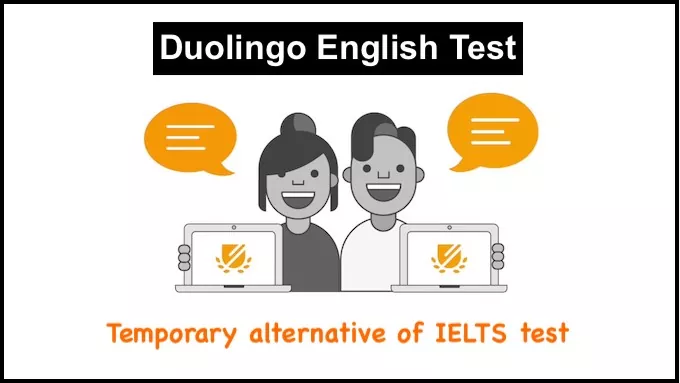English proficiency tests are one of the most important aspects of the process of getting admission to an international institution. In recent times a variety of options are available for students aspiring to study abroad, such as TOEFL, IELTS, Duolingo, and others.
While all of these tests have the same objective, i.e., to assess English language proficiency of the test-takers, they are not identical in terms of syllabus, style of examination, scoring, fee structure, and so on. As an aspirant, it is also essential to analyze and verify ahead of time to see which English proficiency tests are approved at the university/college you intend to apply to.
- It is the most widely recognized test to assess English Language Proficiency.
- It is well-structured and a convenient option.
- It is for students learning British English. Preferable for Indian students.
- Preferred by people trying to get work abroad or for immigration purposes.
- The test is offered frequently.
- It is affordable with a fee of $49.
- Candidates can attend the test from the convenience of their homes in just an hour
- Results are declared within 48 hours.
The most popular and recognized tests are IELTS and TOEFL. PTE is a newcomer in the field and is slightly different from the other two. Various institutional setups are also accepting the Duolingo test scores.
IELTS and TOEFL are center-based tests, while Duolingo is an online proficiency hunter. All these tests have their unique system of scoring. Unlike Duolingo and TOEFL, which offer you a score in terms of points, IELTS assigns you a precise band based on your English language competence. Regardless of the numerous scoring methodologies used, the level of proficiency represented by the score/band is comparable. However, students should choose the test that meets their requirements and is easy for them to practice in terms of test structure and ease of preparation and performance.
All three examinations are designed to examine students’ basic skills to communicate in English, and they operate in a more or less similar style. Applicants need to recognize where they stand and what they’ve scored to evaluate themselves on English language proficiency tests like IELTS, TOEFL, and Duolingo.
TOEFL, IELTS, and Duolingo have their distinct characteristics and unique set of elements that may or may not suit everyone. Those who appear for the tests are recommended to review the syllabus, exam pattern, and marking scheme for all three examinations before selecting the one that best fits their needs. Getting professional assistance would make the entire process much smoother.
Introduction
IELTS is a critical test, especially for students planning to study abroad. This test is necessary for most top-rated or premium universities and colleges in the international context. Currently, almost every high-rated university asks for this scorecard for admitting students from other countries.
Thousands of students take this exam in India and other countries where English is not the first language. Here, we will tell you all about this exam and the scoring system.
What is IELTS?
IELTS, or International English Language Testing System, has recently become one of the famous tests to get a scorecard for your overall English language proficiency. This test assesses your ability or level of speaking, writing and understanding of the English language and provides you with a score result.
In this test, no one fails or passes. Only the proficiency of the language is judged through it. One can score between 0 and 9.
How is the IELTS score calculated?
Your IELTS test score is calculated by aggregating your scores in listening, reading, writing and speaking. The score is expressed through a band scale of 0-9.
How to find your IELTS score
Generally, it takes 4-5 days to take the exam, and after you have completed your test, there are different ways to find your IELTS result.
- Offline mode – It takes 13 days to get your test result if you take it on paper. You can collect it in person from the institute you have taken the test in or avail it by post. This result in paper form is also called the IELTS TRF or test report form.
- Online mode – It is easy to find your IELTS score online if you take your test on a computer. You will find your results within three to five days. Some test centres provide links to check your test score through SMS and email preview alerts. The score is available online for 28 days.
- You can also find your score online from the IELTS result service after 13 days of your test. You need to open the website and provide details such as your test date, candidate number, date of birth, passport or ID number and then click the “Find” button to get your result.
The 9 band scale result
You need to understand the 9 band scale result to understand how good your score is. Also, if you are not happy with your result, you can ask for remarks from the centre you have taken the test in.
- Band 0 – There was no assessable information in your test.
- Band 1 – No ability to use the language except a few words.
- Band 2 – Difficulty in speaking, understanding and writing in English.
- Band 3 – Little understanding and frequent breakdowns while communicating in English.
- Band 4 – Limited proficiency. Difficulty in understanding complex language.
- Band 5 – Moderate proficiency. Good at handling essential communication.
- Band 6 – Competent in using English. Can understand complex language despite some errors.
- Band 7 – Good proficiency. Operational command over the language with some occasional errors.
- Band 8 – Excellent proficiency. Only a few errors in unfamiliar situations.
- Band 9 – High proficiency. Comfortable in using and understanding the language.
Conclusion
IELTS, or the International English language test system, helps you understand your proficiency and command of the English language. Many premium universities such as Oxford University, Harvard University, Cambridge University and others seek IELTS test scores to consider your candidature. So, taking the test and getting a good score is essential to study abroad.







